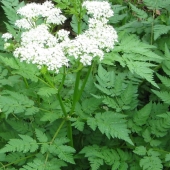posted 1 year ago
I'm not an expert, and have no scientific knowledge. I do have practical experience. We have lived in our house for about 30 years. For about 23/24 years of it we were literally surrounded by walnut orchards. They were English walnut, but all were grafted to a black walnut rootstock. Since that time the west orchard was removed for a house 😞. The north orchard is now almond. We had 4 walnuts in our yard. One is huge. One the English walnut died and the black walnut grew, and one my son cut down only to have the black walnut regrow 3 times now. I have always had a garden, always grown fruit trees. Peach, apricot, plum, apple, cherry (only managed to grow the last couple of years). I also grow grapes, blackberries, and raspberry.
The black walnut that keeps growing back is about 15 feet away from my main veggies garden. The raised beds are all hugel beet style, so odds are there may be black walnut roots in or near them. I'm very proud of my garden and always amazed how much I can grow. Not only might there be roots, but lots of leaves in the fall. Not to mention the squirrels constantly planting walnuts in all loose soil. I'm forever removing little walnut trees from my garden.
I have had lots of failures over the years, but I don't think any of them were because of the walnut. I hope this helps. Good luck
“We can complain because rose bushes have thorns, or rejoice because thorn bushes have roses.” — Abraham Lincoln





